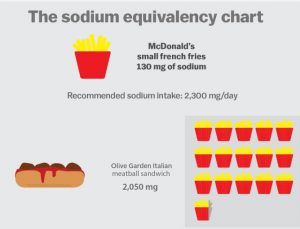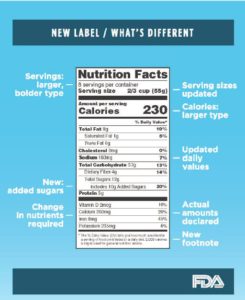Weekend reading: Science & Nutrition Research
I’ve just started getting a new Science and Research newsletter from William Reed: Informing Business Growth.
Some of the listings focus on dietary patterns or emerging microbiome research:
- High-carb meals better in curbing appetite amongst the obese: Study: Foods high in carbohydrates may help promote better short-term appetite control than high-fat foods, a nutritional study has revealed. .. Read
- CVD prevention strategies should focus on eating more ‘good’ foods, not avoiding ‘bad’ foods: Greater consumption of foods found in the Mediterranean diet may be more important for prevention of heart disease and strokes than avoidance of ‘unhealthy’ processed foods, a new study finds. .. Read
- 3 years, 3 countries, 222 children: Big gut data tracks impact of hygiene on microbiome Gut microbiome development in the early stages of life may explain the rise in autoimmune diseases such as diabetes and multiple sclerosis, a study reports. .. Read
- Crowdsourcing control: Don’t make it a free for all, warn researchers: With momentum building for crowdsourcing and funding as a platform for nutrition research, scientists warn that greater control may be needed to safeguard the quality and validity of such studies. .. Read
- Gut flora composition linked to health, diet, and lifestyle, pioneering population study reveals: In one of the first population-wide studies on gut flora variation, a distinct link between gut bacteria and health, diet, and lifestyle, has been established… Read
But most of them focus on single nutrients, ingredients, or foods—suggesting that they are about marketing those ingredients, not necessary health (people don’t eat single foods exclusively; we eat meals and mixtures).
These are a lot of fun. They raise the possibility of magic bullets (if only).
But watch out for the weasel words “may,” “could,” “might”. These mean “may or may not,” “could or could not,” “might or might not.”
- Long-term multivitamin use linked to fewer heart problems: Harvard study: A daily multivitamin may protect men from cardiovascular events such as heart attack and stroke in the long-term, says a new study… Read
- Eating black raspberries may decrease heart disease risk: Study: An extract found in black raspberries can significantly lower arterial stiffness, a key measure of cardiovascular disease, according to data from a Korean study… Read
- New forum showcases the benefits of pulses: A networking forum to help manufacturers understand the nutritional value of pulses has been created by McGill University in Montreal, Canada… Read
- Fish oil, cocoa & plant sterols: The winning combination against heart disease?: Combining fish oil, cocoa extract and plant sterols food supplements could offer an effective defence against heart disease, a new study suggests. .. Read
- Plant-derived bacteria shows anti-obesity effects: RCT: Heat-killed Pediococcus pentosaceus LP28 derived from the longan fruit may help trim waist lines and reduce body fat, say results from a double-blind, randomized, placebo-controlled study… Read
- Olive-sourced hydroxytyrosol effective in biscuits: Study: Olive oil phenol hydroxytyrosol has been shown to be highly bioavailable and to lower oxidised LDL (low density lipoprotein) levels when incorporated into biscuits, suggesting functional food applications could be on the horizon for this EFSA-backed polyphenol. .. Read
- Study shows Calanus oil may benefit blood pressure and heart health: Supplements containing Calanus oil may support cardiovascular health via anti-inflammatory effects in blood vessel walls, says a new study… Read
- Review supports immune health potential of larch arabinogalactan: Supplements of Larch arabinogalactan may support immune health and help reduce the incidence of common cold infections, says a new review… Read
- Insights into banana carotenoids could hold key to fighting blindness: Insights into how bananas make and store carotenoids could help in the future development of banana varieties to combat vitamin A deficiency and blindness, say researchers… Read
- Niagen to be researched for neuroprotective effect among football players: Thorne Research and ChromaDex Corp. are partnering with the Mayo Clinic and the University of Minnesota on a study to assess the effect of nicotinamide riboside (NR) on the brains of football players… Read
- Dark chocolate rivals beetroot juice in boosting athletic performance, study shows: Dark chocolate provides similar benefits to beetroot juice consumed already by elite athletes to improve exercise endurance, a study revealing similar levels of flavanol content has suggested… Read
Wouldn’t you rather eat chocolate than beets? That’s what such studies are about. And I wonder how many of them are funded by the makers of the products. Want to take a look?






